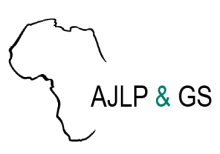Land Library Search
Through our robust search engine, you can search for any item of the over 73,000 highly curated resources in the Land Library.
If you would like to find an overview of what is possible, feel free to peruse the Search Guide.
/ library resources
Showing items 1 through 9 of 126.Dans les zones rurales, où l’agriculture est la principale source de subsistance, la terre est bien plus qu’une simple ressource économique ; elle est essentielle à l’identité et à la culture des communautés.
L’actualité de cet automne s’annonce exceptionnellement chargée sur les questions environnementales : les trois COP issues du Sommet de la Terre vont se réunir à quelques semaines d’intervalle, en commençant par la COP Biodiversité.
We analyze rural households’ purchases of food (cereals and non-cereals) in Sub-Saharan Africa using nationally representative data with 65,000 observations covering 7 countries over a decade.
Background and Context :Land is a key element for the practice of economic activities such as agriculture. In rural areas, its equitable access is an essential condition for sustainable development and the improvement of the living conditions of populations.
Women are more food insecure than men globally and in every region. This paper investigates the global gender gap in food insecurity and its evolution following the COVID-19 pandemic.
Rural Nigeria, with its diverse cultural and socio economic landscapes, presents unique challenges when it comes to digital inclusion.
Current food systems fail to address the triple burden of malnutrition — undernutrition, micronutrient deficiencies, and overnutrition (Popkin, 2019; Béné, 2019; Fanzo, 2020).
The Transforming Agrifood Systems in South Asia (TAFSSA) district agrifood systems assessment aims to provide a reliable, accessible, and integrated evidence base that links farm production, market access, dietary patterns, climate risk responses, and natural resource management with gender as a
The Transforming Agrifood Systems in South Asia (TAFSSA) district agrifood systems assessment aims to provide a reliable, accessible, and integrated evidence base that links farm production, market access, dietary patterns, climate risk responses, and natural resource management with gender as a




